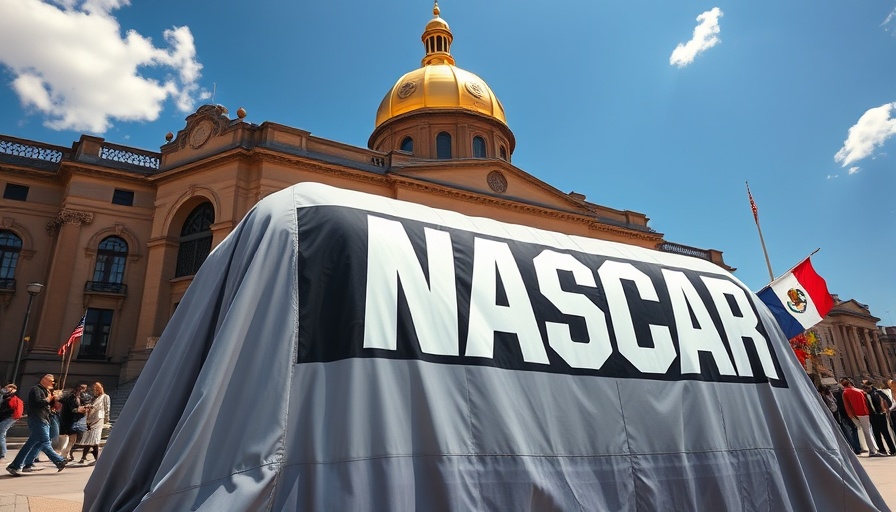
Unpacking the NASCAR Antitrust Lawsuit: What’s at Stake?
The ongoing legal saga between 23XI Racing, Front Row Motorsports, and NASCAR has captured the attention of racing enthusiasts and casual fans alike. The heart of this dispute lies within the antitrust lawsuit filed by the two racing teams, which questions the integrity of NASCAR’s operational structure. But what exactly do the plaintiffs hope to achieve if they win? U.S. District Court Judge Kenneth D. Bell's recent questioning only highlights the complexities of this case.
The Goals of 23XI Racing and Front Row Motorsports
When asked by Judge Bell about the outcomes sought by 23XI and Front Row, their attorney, Jeffrey Kessler, outlined ambitious objectives. First among these is a call for NASCAR to divest from the racetracks it owns—eleven tracks that host major Cup Series events. This move could potentially reshape the landscape of racing, allowing teams more freedom and leveling the competitive playing field. Beyond divestment, the plaintiffs are also angling for financial damages to be tripled, a significant incentive aimed at holding NASCAR accountable for its perceived monopolistic behaviors.
The Broader Implications of the Lawsuit
This lawsuit is more than just a legal battle; it's a crucial point of contention for the racing community, which has been eyeing NASCAR's business model with increasing scrutiny. During the nearly two-hour hearing, the court also delved into NASCAR’s counterclaims, suggesting that the two plaintiffs may have engaged in anti-competitive behavior themselves. They are accused of attempting to manipulate the league through media campaigns and threats of boycotts, raising compelling questions about the ethics of team rivalry and negotiation tactics.
Negotiation Tactics: A Double-Edged Sword?
In courtside exchanges, NASCAR has positioned the alleged boycotts not as threats but as evidence of unwillingness to cooperate, a narrative that could sway public perception. Kessler, however, counters that boycotting meetings is a legitimate part of the negotiation landscape within sports leagues, which often necessitates high-stakes tactics. The rulebook of sports negotiation is murky, and each side is wielding their narrative like a weapon. Fans and followers of the sport are left wondering where the line is drawn between healthy competition and destructive collusion.
What’s Next? The Road Ahead
As the trial date looms closer on December 1, we find ourselves at a crossroads. Judge Bell’s warning—that there may be no clear winner should this dispute escalate—serves as a sobering reminder of the stakes involved. For racing fans, the potential ramifications of this lawsuit could dramatically alter the NASCAR landscape. The whispers of a potential settlement linger, with Kessler emphasizing that both parties could benefit from finding common ground.
Future Predictions: The Impact on NASCAR Culture
What does all this noise mean for fans of NASCAR? Should the lawsuit end favorably for 23XI and Front Row, we could witness a seismic shift in the racing culture. A divested NASCAR may foster a more competitive environment, inviting new teams and spurring innovation. Alternatively, a ruling in favor of NASCAR might solidify the status quo but also galvanize further dissent among other teams unhappy with the current framework. For eager fans, the outcome could determine not just who races but how they race for years to come.
Final Thoughts: The Fans' Voice in the Fray
Ultimately, the driving force behind this legal jargon isn’t just the teams on the track; it's the palpable passion of the fans. Their enjoyment of the sport relies on a balanced competition that feels fair. As this case unfolds, one can only hope that both sides can resolve their differences amicably and maintain the spirit of racing that has captivated audiences for generations. For those on the fence about the implications of this lawsuit, consider the potential ripple effects on everything from race attendance to merchandise sales, impacting not just the teams but the entire NASCAR ecosystem.
Judging by the historical context of sports litigation, fans should stay attuned to updates as this saga continues. Whether you’re a hardcore racing enthusiast or a casual observer, the outcome of this antitrust lawsuit is sure to shape the NASCAR experience in ways we can only begin to imagine.
 Add Row
Add Row  Add
Add 




Write A Comment